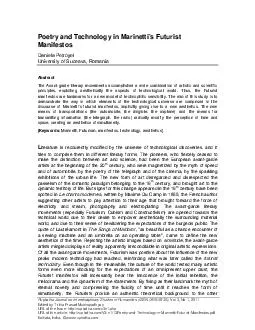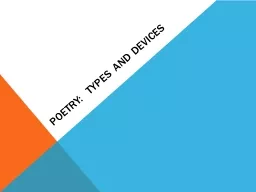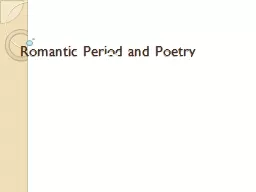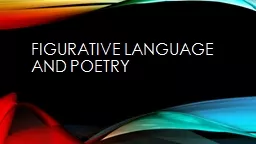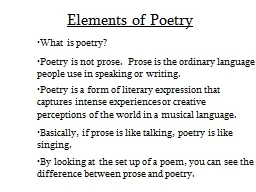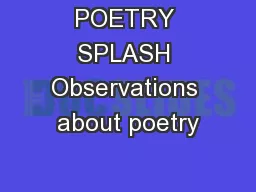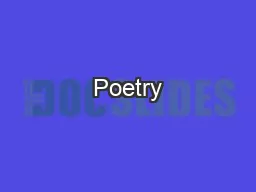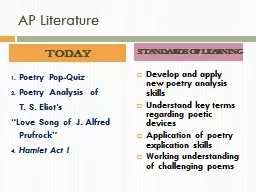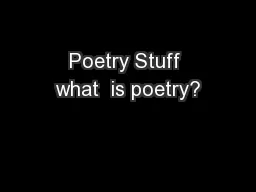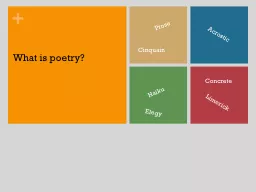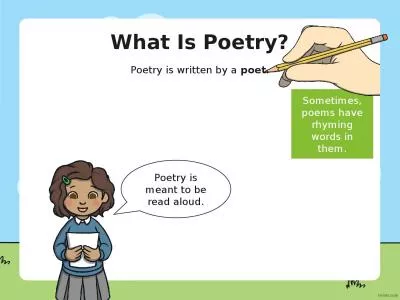PDF-Poetry and Technology in Marinetti
Author : phoebe-click | Published Date : 2015-07-26
Manifestos Daniela Petrox015Fel University of Suceava Romania Abstract The Avant garde literary movements accomplished a wide combination of artistic and scientific
Presentation Embed Code
Download Presentation
Download Presentation The PPT/PDF document "Poetry and Technology in Marinetti" is the property of its rightful owner. Permission is granted to download and print the materials on this website for personal, non-commercial use only, and to display it on your personal computer provided you do not modify the materials and that you retain all copyright notices contained in the materials. By downloading content from our website, you accept the terms of this agreement.
Poetry and Technology in Marinetti: Transcript
Download Rules Of Document
"Poetry and Technology in Marinetti"The content belongs to its owner. You may download and print it for personal use, without modification, and keep all copyright notices. By downloading, you agree to these terms.
Related Documents

